I.
Geographer Dennis Cosgrove has written that American landscapes may best be apprehended from the air. So vast are US landscapes and, likewise, our interventions to rework them, that a vantage point at that level of remove is necessary to appreciate the scale of physical and human geographies here. Nowhere, perhaps, is that perspective more apposite to grasp the enormity of planned American landscapes than for the series of behemoth, high-modern, dirigiste projects undertaken by the Tennessee Valley Authority (TVA), whose territory, spanning seven states, is half the size of California.1
Close to a century after its creation, in the fading years of the last generation to marvel at the miracle of instantaneous light and energy, the magnitude of those engineering projects is as taken for granted as the electricity that is one of the TVA’s lasting legacies for millions across the South. Yet, for all that the exercise of colossal governmental power and the monumental transformations that result are often overlooked today, their impact on the ground is plain to see in John Lusk Hathaway’s photography project One Foot in Eden.2
Hathaway’s subjects are, most immediately, day-trippers to the Cherokee National Forest, along waterways repurposed as a network of reservoirs under the TVA, on the border between North Carolina and Tennessee. Many arrive from nearby Johnson City and some, likely, are descended from the very people displaced from these hills and valleys as dams were built in the twentieth century. They come to hike, to picnic, to boat, to hunt and fish; most of them, according to the Forest Service, from within fifty miles. More men than women, nearly all of the visitors are white, a reflection of local demographics and the underrepresentation of minority populations in national parks countrywide.3


Key to Hathaway’s explorations is a paradox: enormous expanses of the South have been preserved and remain undeveloped precisely because they were originally subjugated for regional development. Regional planning, in places like the South, often meant that designs for governmental interventions were as grand as the places they would transform. Unlike so many tracts of land elsewhere, given over to the banality of urbanization, suburbanization, and exurbanization in the creation of endless geographies of nowhere, here development meant dams, reservoirs, and hydroelectric power. Decades later, the resulting landscapes open windows onto nature as it has always been, even if, as these photographs attest, it is now framed by high-tension electrical cables and the other interminable straight lines that delineate modernity itself.4

The people that populate Hathaway’s images rest and recreate among massive infrastructures and the tendrils that link them into the networks of the modern world. They take in the vastness of the panoramas before them, yet experience the intimacy of being grounded in the materiality of water, earth, wood, stone, and fresh air, far from the humdrum noise of lives lived elsewhere. Beholding these hills, valleys, forests, and waterways in Appalachia is a conduit to a primordial past.
Much more than mere recreation, time in the outdoors is an essential dimension of the human condition, and the people pictured here draw on a deep primal well when they return, time and again, to cherished spots along the waterways of the Cherokee National Forest. Hathaway’s photographs reflect the natural landscapes that were our habitat for 99 percent of our history as a species, yet we feel the transience of the moments his images capture, with but one foot in Eden.5
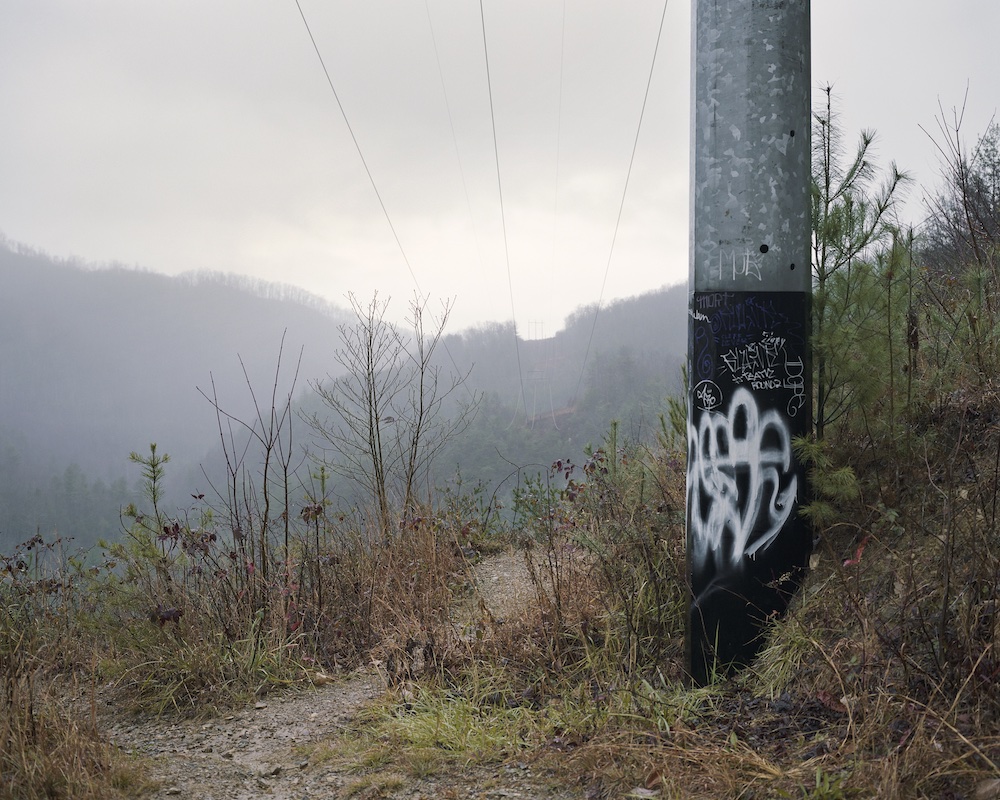
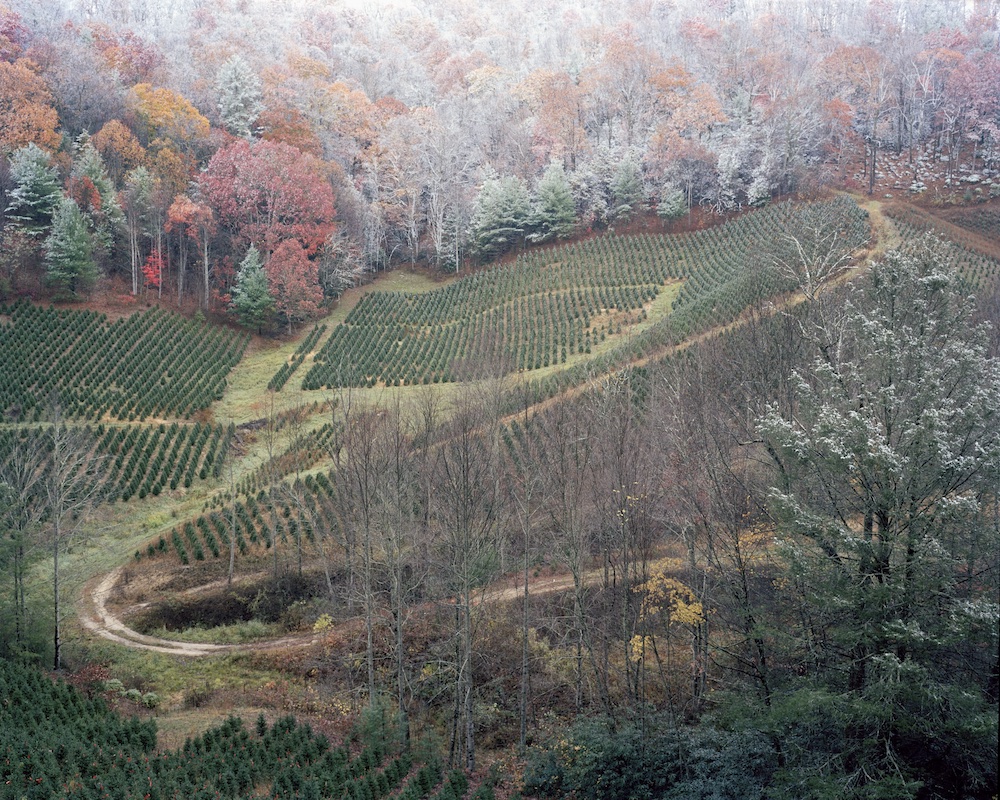
II.
Deep-seated connections to the world around us can be described in terms of biophilia, the idea that humans are primed to value themselves as part of larger biological realities. Coined by biologist E. O. Wilson, biophilia would recognize certain landscapes as universal constants in cultures worldwide. Among them are places overlooking the savanna, woodlands, and, tellingly for Hathaway’s enterprise, places where water is found.6
Beyond the necessity of obtaining food, water, and shelter, researchers verify that natural landscapes are good for the soul, likely resulting from an innate need for the calm required for emotional well-being, recovery from fatigue, stress relief, and, perhaps, creative problem-solving. And even unspectacular natural environments can work the magic of medicine for healthy individuals, as well as those in convalescence, leading, for surgery patients, to lower numbers of days of inpatient postoperative care, fewer negative evaluative comments in nurses’ reports, and lower prescription rates for painkillers. Time spent in this Eden, then, is a restorative salve for Hathaway’s subjects, impacting everything from heart rate to brain activity to immune system responses.7
The ritual of returning to these places may also faintly echo migratory patterns whereby kin groups moved with the seasons, and over longer time horizons as well, making their way back to traditional sites. Just as our ancestors tracked their food, the examples of hunting and fishing that we see in Hathaway’s photographs speak to sustenance from the forest, an aspect reaffirmed in the many images of families and friends preparing and consuming food. The demeanor of the visitors in repose and reverie foregrounds these as nurturing landscapes.8


Rituals are encoded here in multiple ways, calling attention to this place’s spiritual dimensions. T-shirts, shorts, and flip-flops repeat across the photographs so often as to suggest an understated uniform for this wilderness. Time spent in and around the water is a constant: along the shore, on boats, wading and drifting, basking in the sun. There are images of dams in the forest, but TVA infrastructure is obliquely pictured in this project, as in photographs of drowned trees and stumps made visible as water is drawn down for hydroelectricity generation and as periodic droughts lower the waterline across these valleys.9
Those droughts are of a piece with the flood events that again loom within the TVA system under climate change. Our stewardship of microcosmic arcadias like the Cherokee National Forest begs questions about our relationship to other paradises, most pressingly Earth as our only home. Ultimately, Hathaway’s project asks us to consider the urgency of our present moment and whether we’re stepping into or out of our Edens.10
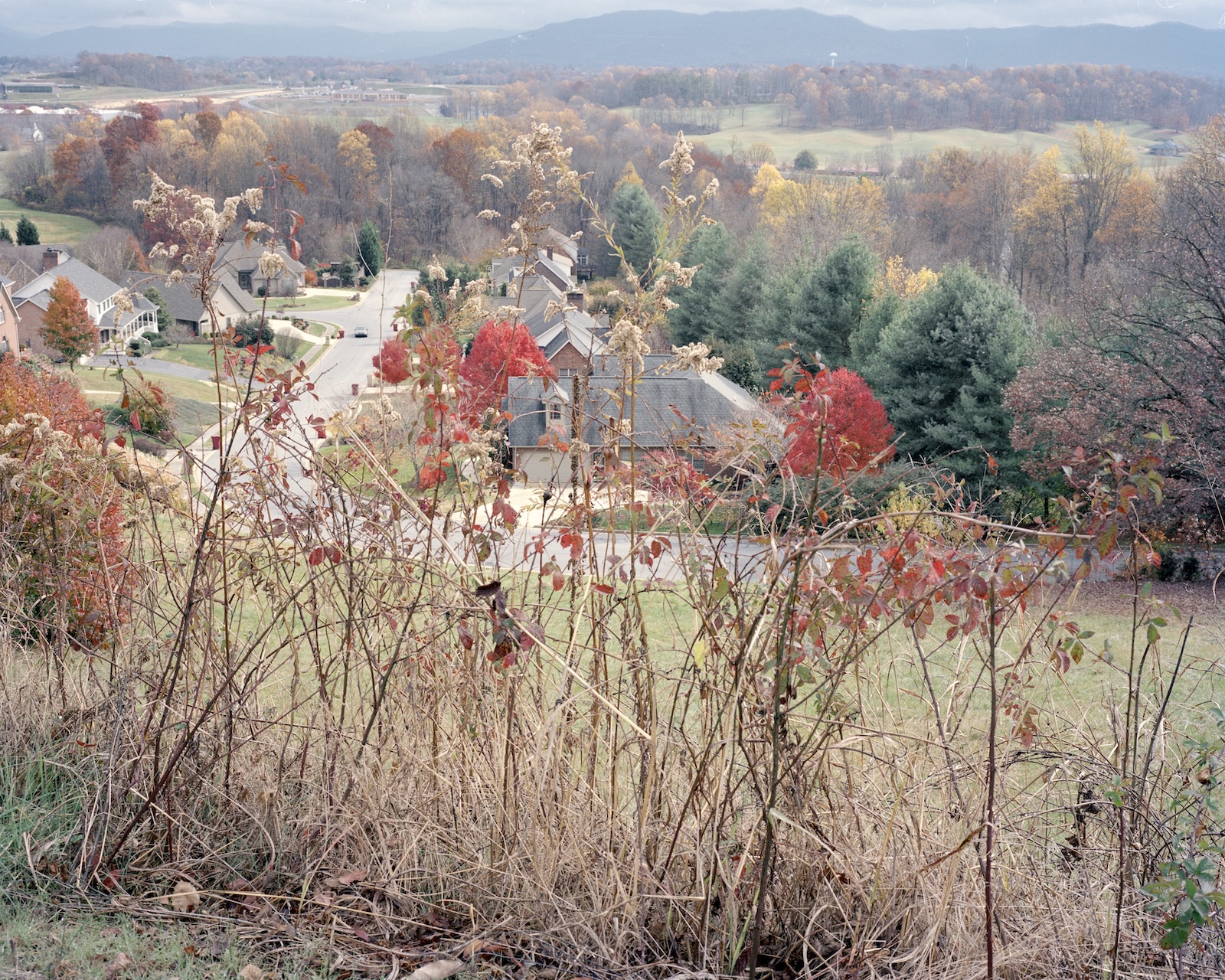
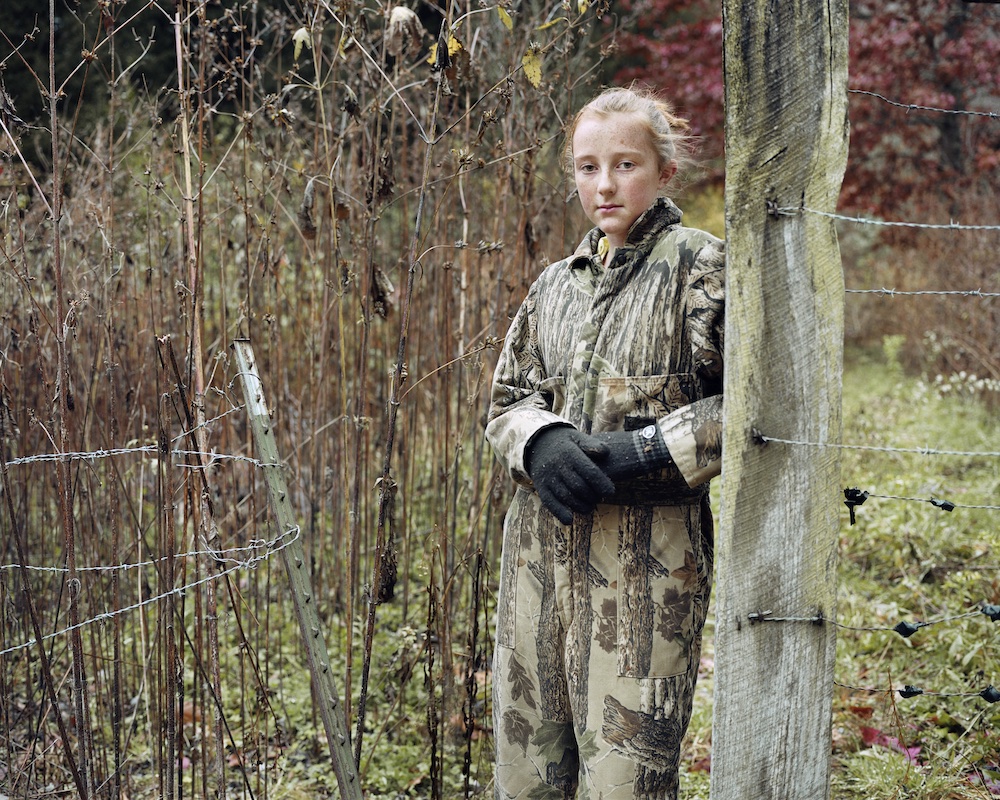

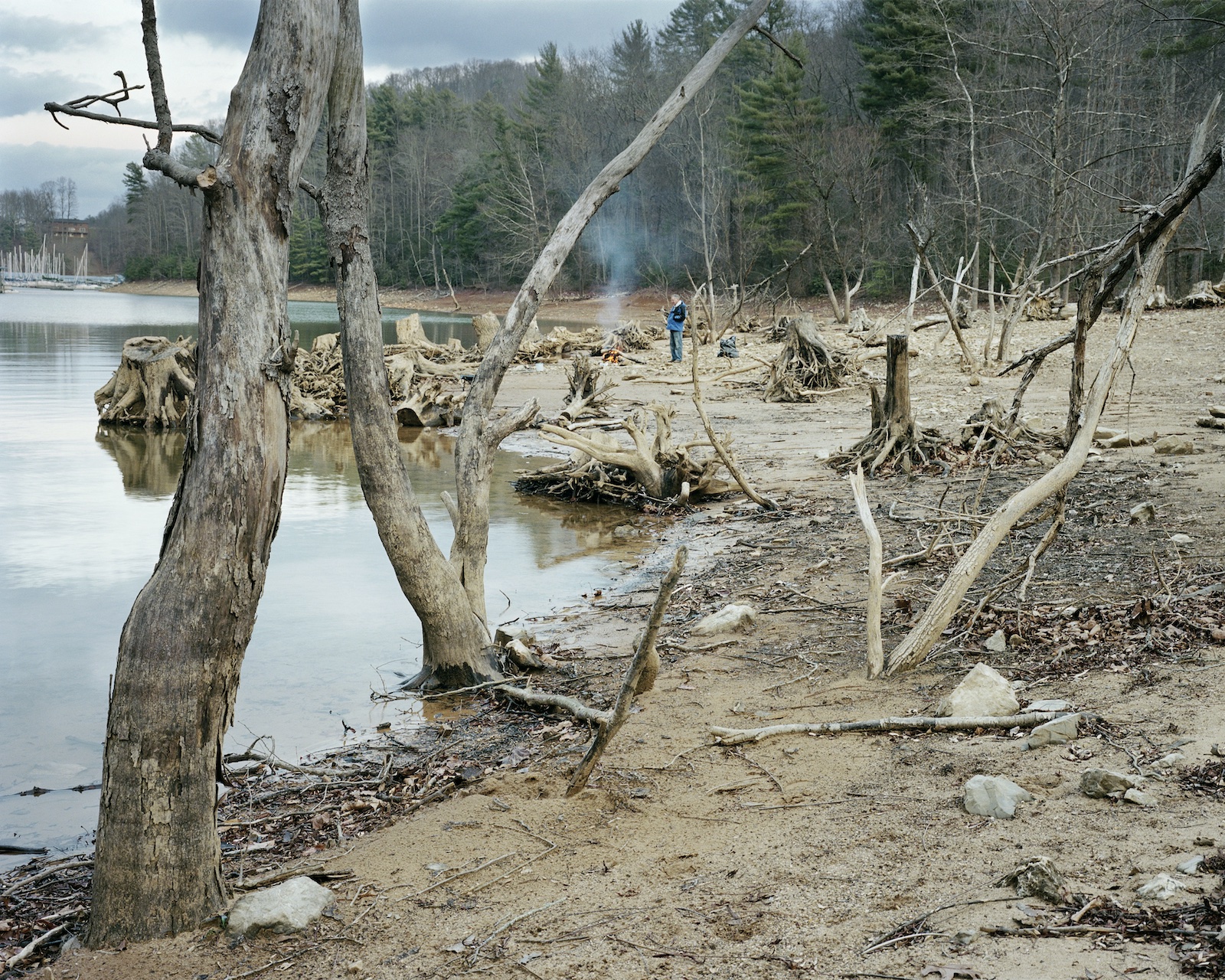
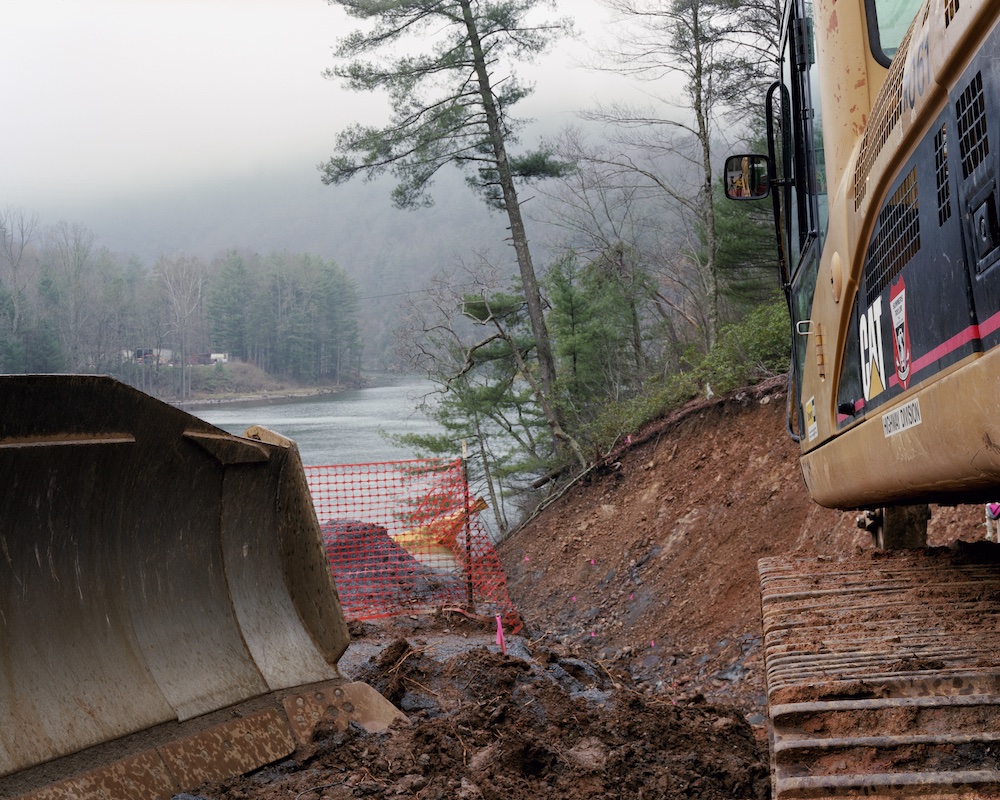
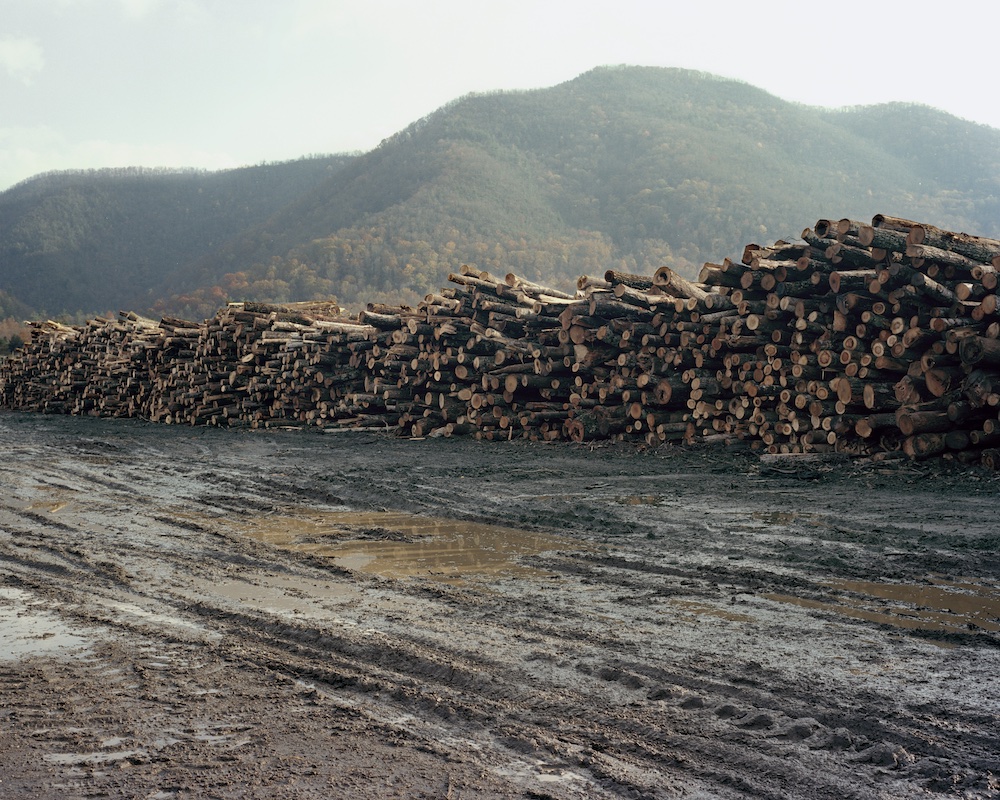
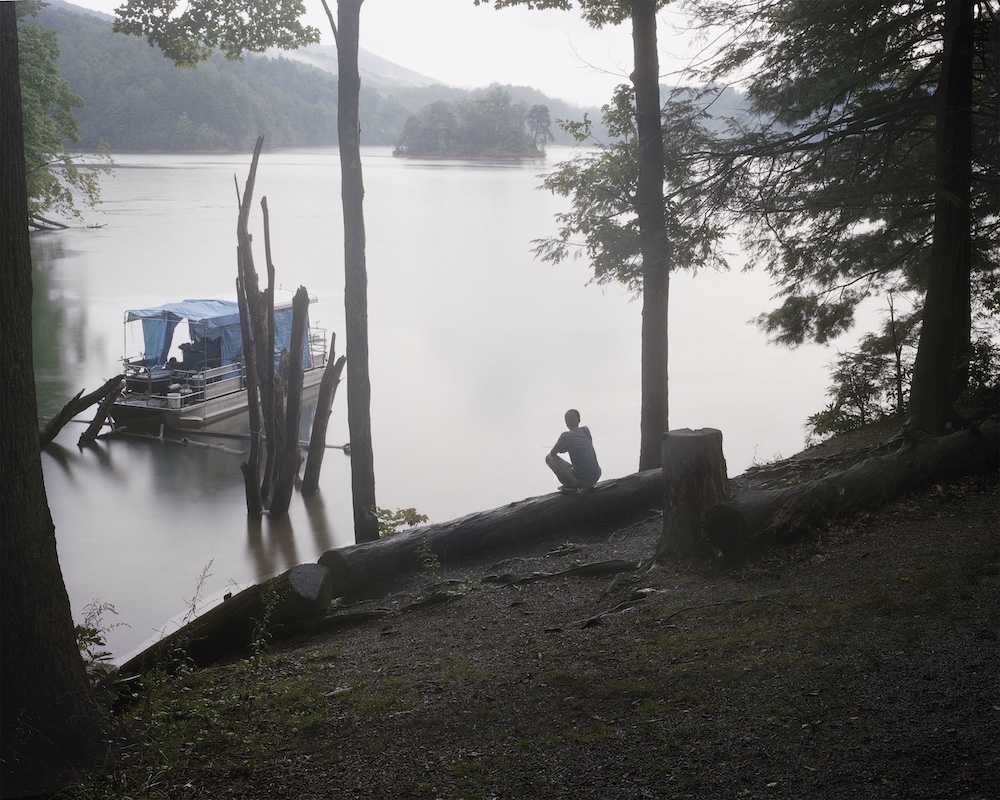
This essay first appeared in the Built/Unbuilt Issue (vol. 27, no. 3: Fall 2021).
John Lusk Hathaway was born in Memphis, Tennessee. He received his MFA from East Tennessee State University in 2012. Nominated for the Baum Award, he received the Individual Artist Fellowship Grant from the Tennessee Arts Commission in 2014. Hathaway is an adjunct professor of photography at the College of Charleston.
Political geographer Mark Long is professor of political science at the College of Charleston, and curator-at-large and academic liaison at its Halsey Institute of Contemporary Art. His research is concerned with intersections between visual culture and place in settings as varied as Antarctica, Israel, and the American South.NOTES
- Denis Cosgrove, Geography and Vision: Seeing, Imagining and Representing the World (New York: I. B. Tauris, 2008).
- John Lusk Hathaway, “One Foot in Eden,” accessed April April 6, 2021, http://www.johnluskhathaway.com/welcome/uncategorized/one-foot-in-eden/.
- United States Department of Agriculture Forest Service, Visitor Use Report Cherokee NF, last modified February 2, 2021, https://apps.fs.usda.gov/nvum/results/ReportCache/2017_A08004_Master_Report.pdf; Carolyn Finney, Black Faces, White Spaces: Reimagining the Relationship of African Americans to the Great Outdoors (Chapel Hill: University of North Carolina Press, 2014)
- Patrick Kline and Enrico Moretti, “Local Economic Development, Agglomeration Economies, and the Big Push: 100 Years of Evidence from the Tennessee Valley Authority,” Quarterly Journal of Economics 129, no. 1 (February 2014): 275–331; James Howard Kunstler, The Geography of Nowhere: The Rise and Decline of America’s Man-Made Landscape (New York: Simon and Schuster, 1994).
- Edward O. Wilson, Biophilia: The Human Bond with Other Species (Cambridge, MA: Harvard University Press, 1984); Judith H. Heerwagen and Gordon H. Orians, “Humans, Habitats, and Aesthetics,” in The Biophilia Hypothesis, ed. Stephen R. Kellert and Edward O. Wilson (Washington, DC: Shearwater, 1993), 138–172.
- Wilson, Biophilia.
- Roger S. Ulrich, “Biophilia, Biophobia, and Natural Landscapes,” in The Biophilia Hypothesis, ed. Stephen R. Kellert and Edward O. Wilson (Washington, DC: Shearwater, 1993), 73–137; Roger S. Ulrich, “View through a Window May Influence Recovery from Surgery,” Science 224, no. 4647 (April 1984): 420–421; Florence Williams, The Nature Fix: Why Nature Makes Us Happier, Healthier, and More Creative (New York: Norton, 2017).
- Marcus J. Hamilton et al., “The Ecological and Evolutionary Energetics of Hunter-Gatherer Residential Mobility,” Evolutionary Anthropology 25, no. 3 (May 2016): 124–132.
- Lucy R. Lippard, The Lure of the Local: Senses of Place in a Multicentered Society (New York: New Press, 2007).
- Tennessee Valley Authority, Climate Change Adaptation and Resiliency Plan 2020 Update, July 15, 2020, https://tva-azr-eastus-cdn-ep-tvawcm-prd.azureedge.net/cdn-tvawcma/docs/default-source/about-tva/guidelines-reports/climate-change-adaptation-plan.pdf?sfvrsn=ea883571_2. See also Sarah Kennedy and ChavoBart Digital Media, “Ancient Tennessee River Floods Hold a Warning for the Future,” Yale Climate Connections, Yale School of the Environment, accessed April 6, 2021, https://yaleclimateconnections.org/2020/08/ancienttennessee-river-floods-hold-a-warning-for-the-future/.


